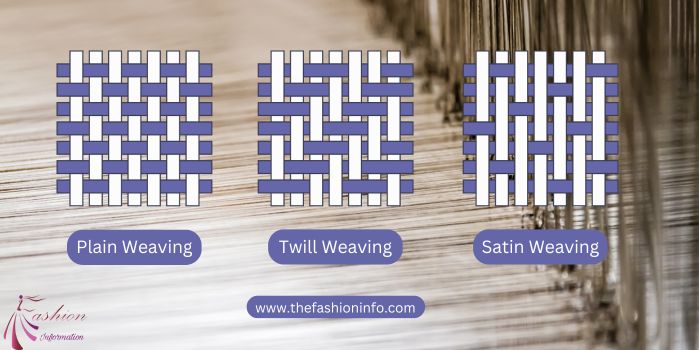Weaving, one of humanity’s oldest crafts, transforms threads into textiles through intricate patterns and techniques. Whether you’re a hobbyist or a curious reader, understanding the types of weaving unlocks creativity and appreciation for this timeless skill. Let’s dive into its definition, tools, history, and popular methods—including a glimpse into my own journey with a beginner’s loom.
Table of Contents
What is Weaving?
Weaving is the process of interlacing two sets of threads—warp (vertical) and weft (horizontal)—to create fabric. This method relies on tension, rhythm, and tools like looms and shuttles. My first attempt involved a DIY cardboard loom, where uneven stitches taught me the importance of patience!
Historical Evolution: From Ancient Threads to Modern Machines
The history of weaving spans millennia. Early humans used plant fibers on rudimentary frame looms, while ancient Egyptians perfected linen weaving. By the Middle Ages, Europe’s vertical looms birthed tapestries, and the Industrial Revolution introduced mechanized types of weaving. Today, digital looms craft everything from jacquard upholstery to breathable athletic wear. During a workshop, I tried a replica Neolithic loom—its simplicity humbled me!
Basic Weaving Tools of Weaving types
- Looms: Frame looms (budget-friendly for beginners), rigid heddle looms (versatile for scarves), and jacquard looms (for complex patterns).
- Shuttles: Boat shuttles glide smoothly, while stick shuttles work for bulky yarn. My first shuttle flew off the loom mid-stitch—lesson learned!
- Heddles: These eyelet tools separate warp threads to create sheds.
- Beaters: Compact or heavy, they press weft threads into place.
Choosing Your Weaving Tools: A Quick Comparison
| Tool | Use Case | Price Range | Skill Level |
|---|---|---|---|
| Frame Loom | Small projects | 20–80 | Beginner |
| Rigid Heddle | Scarves, towels | 150–300 | Intermediate |
| Boat Shuttle | Smooth weft insertion | 10–30 | All levels |
What are the 5 Methods of Weaving?
Before exploring methods, let’s define weaving: the process of interlacing warp (vertical) and weft (horizontal) threads under tension. While there are countless styles, five primary types of weaving dominate modern and traditional textile creation. My first project—a lumpy but lovable coaster—taught me how even basic techniques demand precision!
1. Plain Weave: The Foundation of Fabric Creation
The simplest of all weaving techniques, the plain weave involves alternating warp and weft threads. Think burlap or chiffon—lightweight and durable.
- How it works: Warp and weft threads alternate in a simple over-under pattern.
- Examples: Cotton muslin, chiffon, burlap.
- Why it’s used: Lightweight, durable, and beginner-friendly. My first handwoven dishcloth used this method—wonky but functional!
2. Twill Weave: Diagonal Patterns for Durability
Twill creates diagonal ridges by offsetting weft threads. Denim and tweed exemplify this style, prized for strength.
- How it works: Weft threads pass over multiple warp threads, creating diagonal ridges.
- Examples: Denim, tweed, gabardine.
- Why it’s used: Dense, flexible, and hides stains—perfect for jeans and workwear.
Here is the complete article on Plain vs Twill Weave
3. Satin Weave: Luxurious Shine and Smoothness
Satin’s glossy finish comes from floating weft threads over multiple warps. Silk satin feels luxurious, while polyester offers affordability.
- How it works: Long “floats” (unbroken weft threads) create a glossy surface.
- Examples: Silk satin, sateen, charmeuse.
- Why it’s used: Luxurious drape and sheen, though prone to snags. I learned this the hard way with a snagged satin pillowcase!
4. Basket Weave: A Twist on Tradition
This technique groups threads in pairs, mimicking woven baskets. Ideal for dish towels and rustic decor.
- How it works: Warp and weft threads are grouped in pairs, mimicking a woven basket.
- Examples: Oxford cloth, monk’s cloth, dish towels.
- Why it’s used: Textured and sturdy, ideal for rustic decor or breathable shirts.
5. Jacquard Weave: Complexity Meets Creativity
Automated jacquard looms craft brocade or damask. Modern tabletop versions let hobbyists experiment with detailed patterns.
- How it works: Automated looms create intricate, programmable patterns.
- Examples: Brocade, damask, tapestries.
- Why it’s used: Complex designs like florals or geometric motifs. Modern jacquard looms even let hobbyists experiment!
Quick Comparison Table on weaving types
| Weave Pattern | Key Feature | Common Uses | Skill Level |
|---|---|---|---|
| Plain | Simple & durable | Everyday fabrics | Beginner |
| Twill | Diagonal texture | Denim, upholstery | Intermediate |
| Satin | Smooth & shiny | Formalwear, bedding | Intermediate |
| Basket | Textured grid | Towels, decor | Beginner |
| Jacquard | Detailed designs | Luxury fabrics | Advanced |
Final Thoughts
From ancient handlooms to modern digital machines, types of weaving continue to shape our world. Whether you’re crafting heirlooms or simply curious, this craft offers endless creativity. Grab a loom, thread your shuttle, and let the magic begin!

